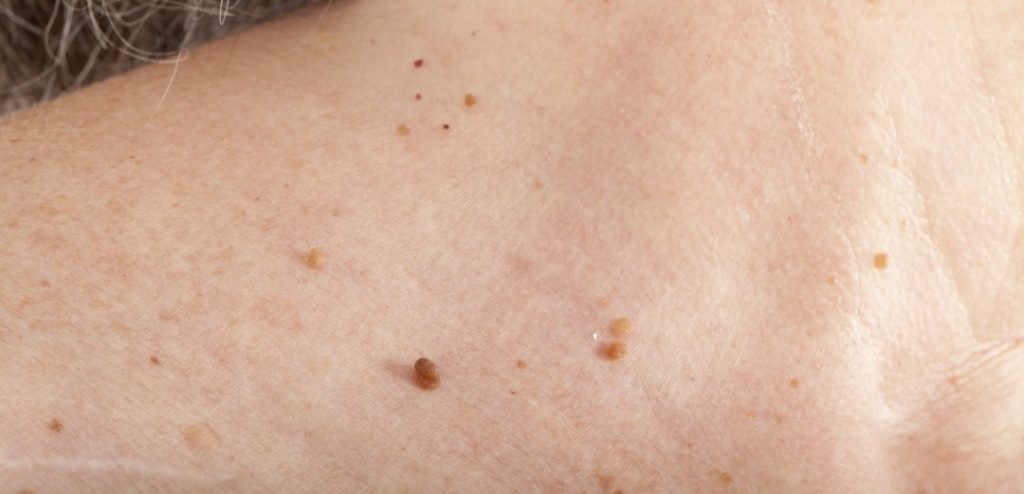Skin tags, also known as acrochordons, are painless, noncancerous growths on the skin. These growths are right on the surface of the skin and even seem to sprout from a thin stalk of skin and hang off the body. Skin tags are usually flesh-colored growths but some may be darker in color. Skin tags are common in both men and women, especially after age 50. They can appear anywhere on your body, though they’re commonly found in places where your skin folds or rubs together. These places include:
- Armpits
- Neck
- Eyelids
- Under breast
- Groin
- Thighs

HOW DO I TELL IT’S A SKIN TAGS?
The main way to identify a skin tag is the way it sprouts out from the skin. Unlike most moles and other skin growths, these skin tags almost look like they are hanging off the skin from their thin stalk. Skin tags are usually smooth and smaller than 2 millimeters in size, although some can grow to several centimeters. These tags may be round and smooth or wrinkled and asymmetrical. Skin tags are usually flesh-colored growths but some may be darker in color.
HOW TO REMOVE SKIN TAGS
Skin tags are usually harmless and do not require treatment. In some cases, tiny skin tags will just rub off on their own. If your skin tag becomes irritated or bothersome, your provider can remove. Small skin tags usually do not require anesthesia. Your provider may use a local anesthesia when removing larger or multiple skin tags.
- Cryotherapy: Freezing the skin tag with liquid nitrogen.
- Electrocautery: Burning off the skin tag with high-frequency electrical energy.
- Ligation: Removing the skin tag by tying it off with surgical thread in order to cut off its blood flow.
WHAT CAUSES SKIN TAGS?
It’s unclear exactly what causes skin tags. Since they usually show up in skin folds, friction may play a role. Skin tags are made up of blood vessels and collagen surrounded by an outer layer of skin. Skin tags aren’t contagious. There may be a genetic connection. You may be at greater risk of getting skin tags if you:
- are overweight
- are pregnant
- have family members who have skin tags
Skin tags don’t become skin cancer. Irritation may occur if they rub with clothing, jewelry, or other skin. Shave with caution around skin tags. Shaving off a skin tag won’t cause permanent damage, though it may cause pain and prolonged bleeding. If you develop a skin tag, it may not be cause for concern. For most people, skin tags are just a nuisance. If they don’t bother you, and you’re sure of the diagnosis, you can leave them alone. Keep in mind that where you have one skin tag, more may appear.
IS SKIN TAG REMOVAL COVERED BY INSURANCE?
Skin tags, even if irritated are benign lesions that are not covered by insurance. We offer a cosmetic skin tag removal fee ranging from $250-500 depending on the amount of skin tags you are wanting removed.


